This post may contain affiliate links. Please see our disclosure policy.
Pickled Crabapples are an old-fashioned treat and a delicious way to enjoy crabapples in season. The sweet tart tang is perfect for serving with pork or other meat main dishes, and it’s a delicious dessert topping. They’re also tasty right out of the jar!
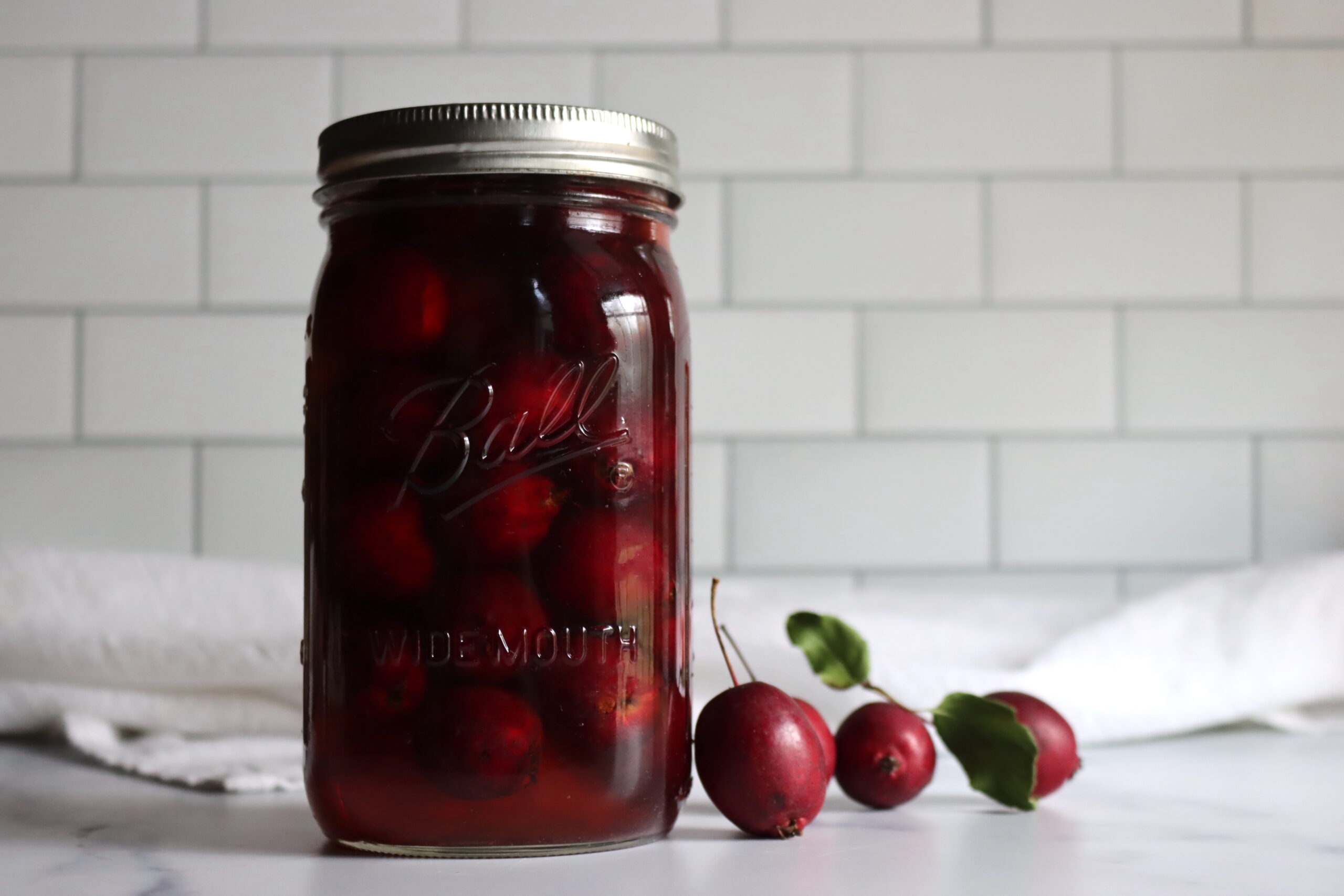
Canning pickled crabapples is an art form that has been treasured for generations, and for good reason – it produces a unique and delicious flavor profile that cannot be found with any other fruit.
These tart and tiny apples are full of pectin, which makes them perfect for pickling. When canned, they retain their firm texture and tartness, and the pickling solution preserves them perfectly for your enjoyment.
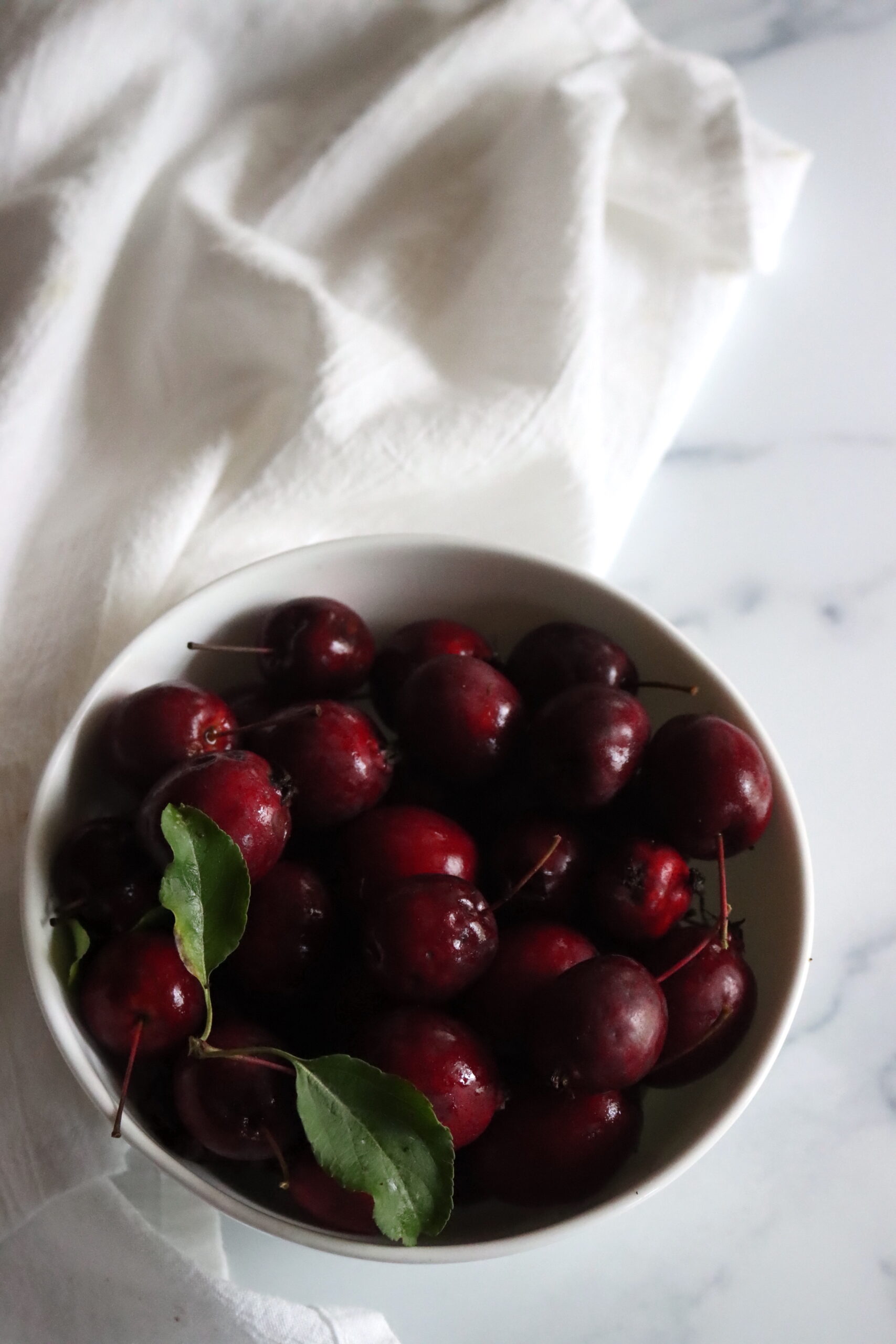
And while crabapples might not be the best for snacking on their own, pickled crab apples make an excellent accompaniment to cheese boards, charcuterie plates, and even roasted meats. They add a tangy and sweet crunch to any dish, and can also be used to make a variety of specialty condiments such as chutneys, relishes, and even cocktails.
But canning pickled crabapples is not just about the delicious end result. It’s also a wonderful opportunity to connect with our culinary heritage and to preserve a piece of our food culture for future generations. It is a skill that can be passed down from grandmother to granddaughter, and that has been woven into the fabric of our food traditions for centuries.
So if you’re looking for a tasty and unique way to preserve your harvest, or simply want to try your hand at pickling, give canning pickled crabapples a try. Here’s how to do it!

Ingredients for Pickled Crabapples
This is a safe, tested recipe for canning pickled crabapples from the The Ball Blue Book Guide to Preserving. The same recipe is also included in So Easy to Preserve by the University of Georgia Cooperative Extension.
The ingredients for canning pickled crabapples are quite simple. To make a canner batch of six pints, you’ll need the following:
- 2 quarts crabapples (stems attached, about 2 ½ lbs total)
- 3 cups water
- 6 cups sugar
- 3 cups vinegar with at least 5% acidity
- 2 sticks of cinnamon
- 1 ½ tbsp whole cloves
- 1 ½ tbsp whole allspice
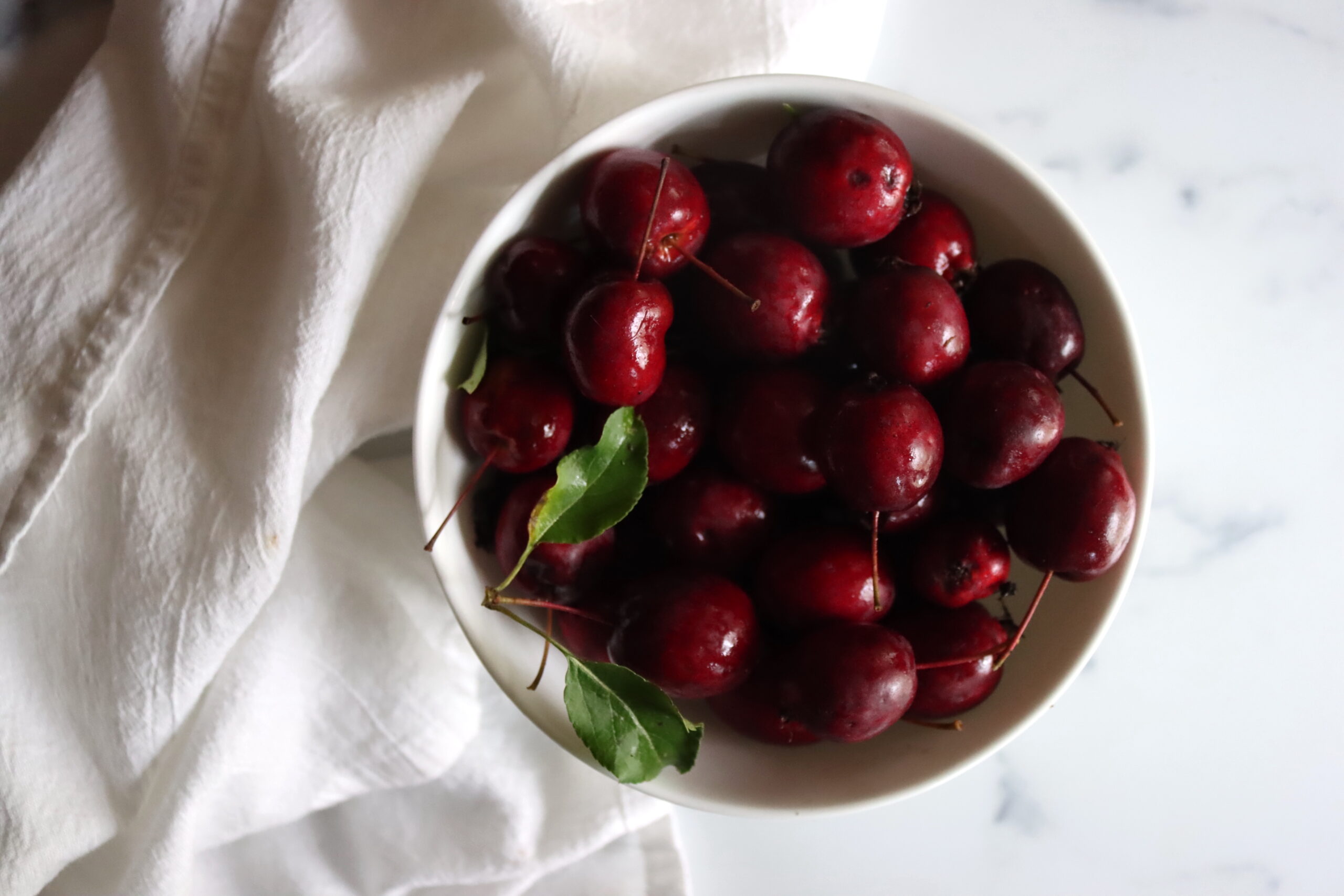
Canning Pickled Crabapples
Begin by thoroughly cleaning your crabapples. Rinse them under cold running water and allow them to drain. Then, use a thin metal skewer to poke some holes in the apples to prevent the peel from bursting during the canning process. Once that’s done, set the apples aside.
To make the pickling liquid, combine sugar, water, and vinegar in a large saucepan and heat it up until the sugar dissolves. Now, add the spices (which should be in a spice bag) and let it simmer for five minutes.
Next, you’ll add the crabapples to the mix. Add them in one layer at a time and allow them to simmer until they’re tender. Then, remove them and place them in a large bowl. Pour the pickling liquid over the apples, cover the bowl, and place it in the refrigerator for 12 to 18 hours.
Once the waiting game is over, it’s time to start canning! Remove the spice bag from the pickling liquid and put it back on the stove. Bring it to a boil and get ready to pack your hot jars.
Load the jars, pouring apples with equal amounts of pickling liquid over them. Make sure you leave a half inch of headspace at the top of each jar.
After packing the jars, make sure to clean the rims, center the lids, and adjust the bands to fingertip tightness. Then, place the jars on a rack over simmering water and process them for 15 minutes for pint jars and 20 minutes for quarts (adjusting for altitude). Make sure the jars are covered with at least one inch of water.
Once the processing time is up, turn off the heat and let the jars cool for five minutes. Then, remove them from the canner, and don’t tighten any loose bands. Let them cool for 12 hours and check to make sure they’re sealed. Label and store for up to a year!
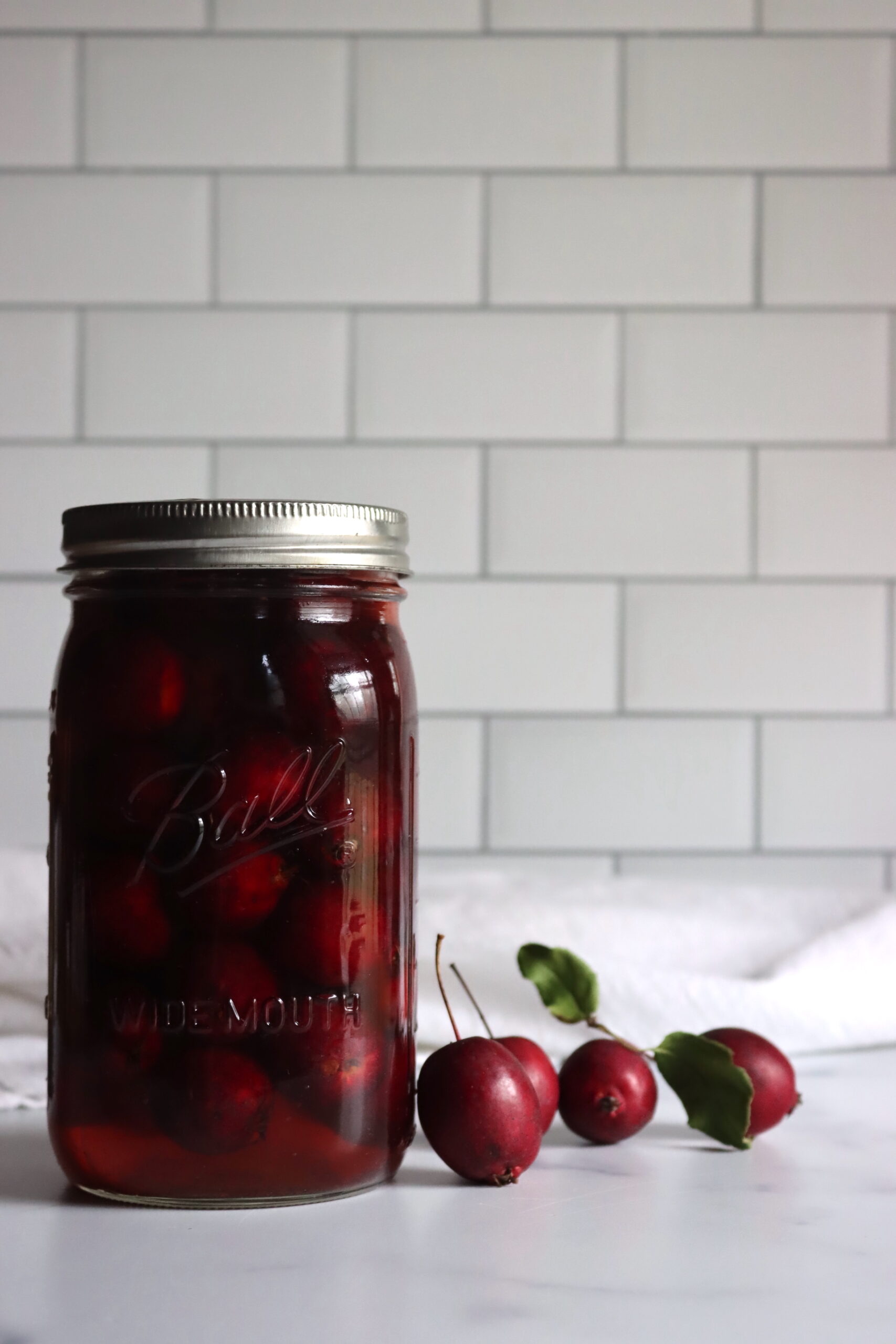
Altitude Adjustments for Pickled Crabapples
If you’re above 1000 feet in elevation, you’ll need to adjust canning times to altitude: The altitude adjustments for pickled crabapples are as follows:
- For Under 1,000 Feet in Elevation – 15 minutes for pints, 20 minutes for quarts
- For 1,001 to 3,000 Feet in Elevation – 20 minutes for pints, 25 minutes for quarts
- For 3,001 to 6,000 Feet in Elevation – 25 minutes for pints, 30 minutes for quarts
- For 6,001 to 8,000 Feet in Elevation – 30 minutes for pints, 35 minutes for quarts
- For 8,001 to 10,000 Feet in Elevation – 35 minutes for pints, 40 minutes for quarts
Serving Pickled Crabapples
The beauty of pickled crabapples is that they’re perfectly fine straight out of the jar, but if you want to jazz them up a bit, try adding some fresh herbs like thyme or rosemary, a spoonful of honey, or a dash of hot sauce.
Want to get more creative? Try chopping up your pickled crabapples into a relish to serve alongside grilled pork chops or roast turkey. Or mix them into a salad with some bitter greens, crumbled cheese, and toasted nuts for some great texture and flavor.
Apple Canning Recipes

Pickled Crabapples
Equipment
Ingredients
- 2 Quart crab apples, stems attached, about 2 ½ lbs total
- 3 cups water
- 6 cups sugar
- 3 cups vinegar, with at least 5% acidity
- 2 sticks cinnamon
- 1 ½ tbsp whole cloves
- 1 ½ tbsp whole allspice
Instructions
- Begin by thoroughly cleaning your crabapples. Rinse them under cold running water and allow them to drain.
- Use a thin metal skewer to poke some holes in the apples to prevent the peel from bursting during the canning process. Set the apples aside.
- To make the pickling liquid, combine sugar, water, and vinegar in a large saucepan and heat it up until the sugar dissolves.
- Add the spices (which should be in a spice bag) and let it simmer for five minutes.
- Add the crabapples to the mix. Add them in one layer at a time and allow them to simmer until they're tender.
- Remove the apples and place them in a large bowl. Pour the pickling liquid over the apples, cover the bowl, and place it in the refrigerator for 12 to 18 hours.
- Once the waiting game is over, it's time to start canning! Remove the spice bag from the pickling liquid and put it back on the stove. Bring it to a boil and get ready to pack your hot jars.
- Load the jars, pouring apples with equal amounts of pickling liquid over them. Make sure you leave a half inch of headspace at the top of each jar.
- After packing the jars, make sure to clean the rims, center the lids, and adjust the bands to fingertip tightness.
- Then, place the jars on a rack over simmering water and process them for 15 minutes for pint jars and 20 minutes for quarts, adjusting for altitude. Make sure the jars are covered with at least one inch of water.
- Once the processing time is up, turn off the heat and let the jars cool for five minutes.
- Let the jars cool for 12 hours and check to make sure they're sealed.
- Label and store for up to a year!
Notes
Altitude Adjustments for Pickled Crabapples
If you're above 1000 feet in elevation, you'll need to adjust canning times to altitude: The altitude adjustments for pickled crabapples are as follows:- For Under 1,000 Feet in Elevation – 15 minutes for pints, 20 minutes for quarts
- For 1,001 to 3,000 Feet in Elevation – 20 minutes for pints, 25 minutes for quarts
- For 3,001 to 6,000 Feet in Elevation – 25 minutes for pints, 30 minutes for quarts
- For 6,001 to 8,000 Feet in Elevation – 30 minutes for pints, 35 minutes for quarts
- For 8,001 to 10,000 Feet in Elevation – 35 minutes for pints, 40 minutes for quarts
Nutrition
Nutrition information is automatically calculated, so should only be used as an approximation.
Fruit Pickling Recipes
Fruit pickles are delicious! Don’t stop with pickled crabapples!
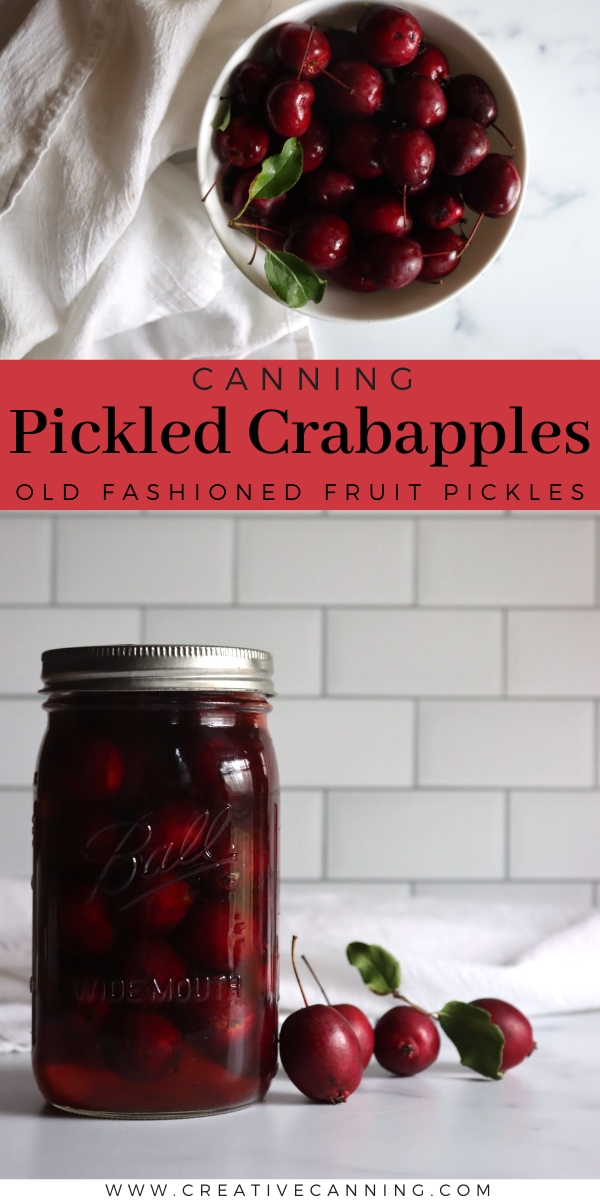
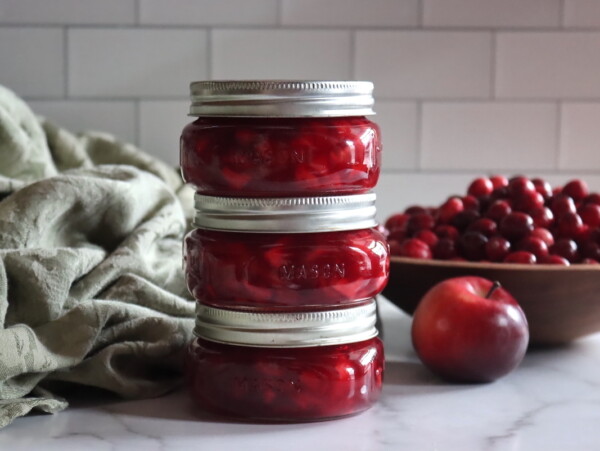

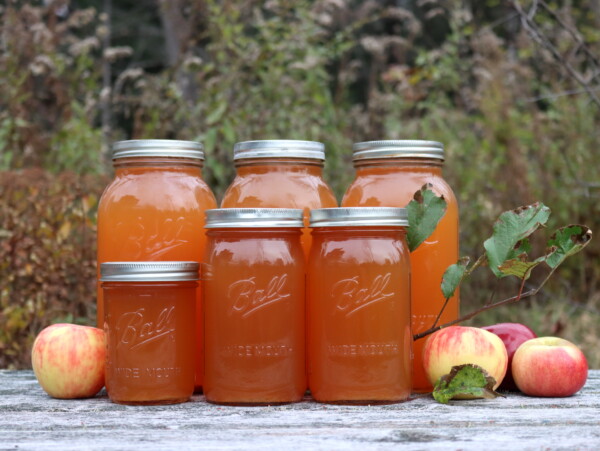

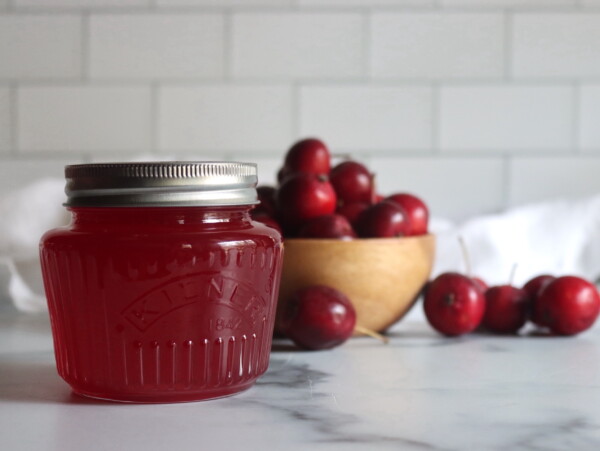
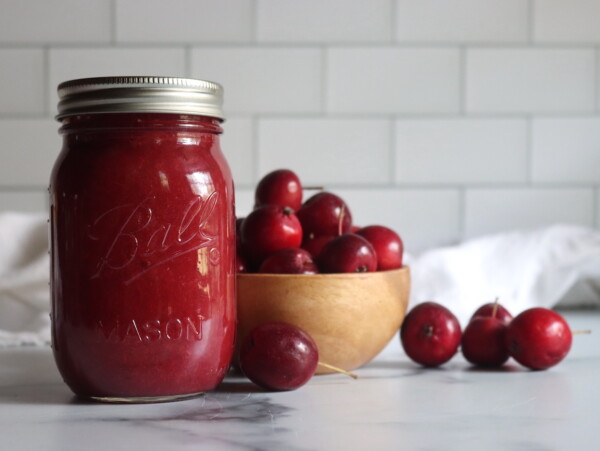
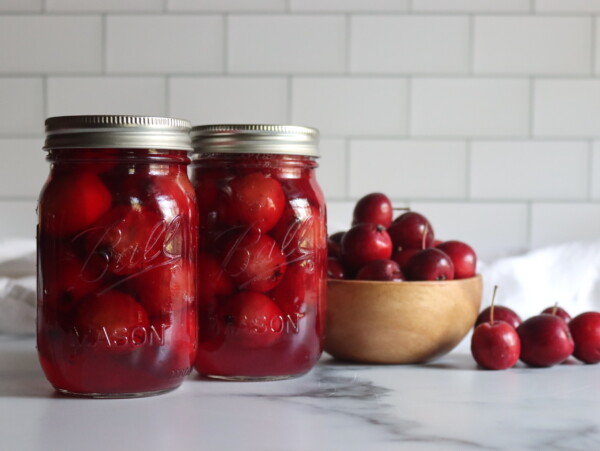
A little to sweet for my taste 6 cups of sugar is a lot, I split my batch and grilled a jalapeño pepper and soaked it in the brine while it cooled then removed it.
Will do this again!!
I can’t wait to try your recipes. I always wondered about cutting up all those small crabapples to get out all the seeds.